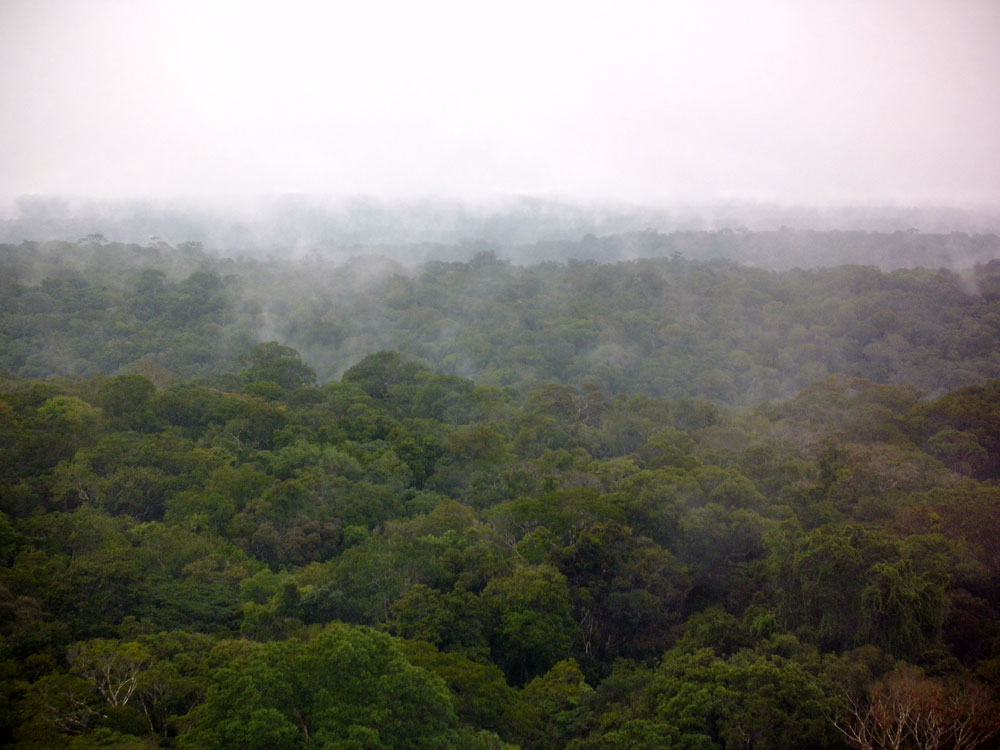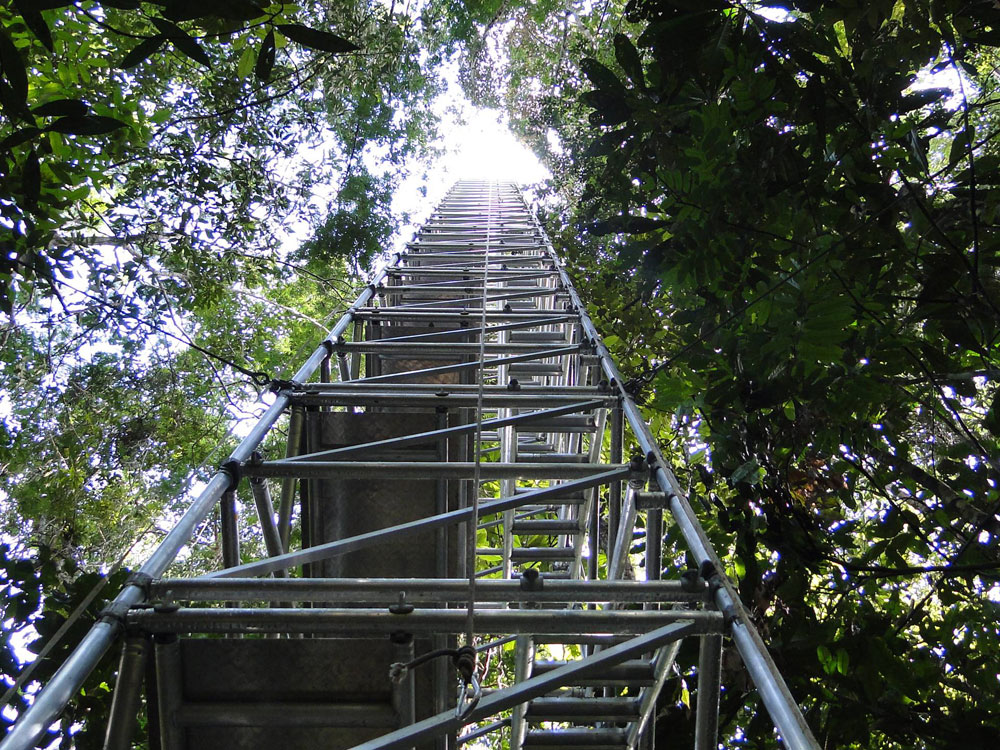
Amazon Fungi Help Create Clouds & Rain

In the Amazon rain forest, salty particles from spore-launching fungi help make clouds and rain, according to new research.
The tiny, potassium-rich specks, smaller than bacteria, waft above the forest into the air. Once in the atmosphere, organic gases condense on the particles, coating them with gel-like compounds. The coated particles provide a surface for water vapor to form cloud droplets and rain.
"To form rain, you need a surface [that] water can condense on. The biosphere of microorganisms and plants are releasing particles that are triggering the rain," said lead researcher Christopher Pöhlker, a doctoral student at the Max Planck Institute for Chemistry in Mainz, Germany.
The new study, detailed in tomorrow's (Aug. 31) issue of the journal Science, suggests the Amazonian rain forest ecosystem is coupled in a feedback system, with climatic conditions above influenced by plants below and vice versa, the researchers said.
Pristine air
The Amazon River basin is home to the largest rain forest on Earth, covering about 2.67 million square miles (6.9 million square kilometers) in seven countries.
The remote site where the study took place has "pristine" air during the rainy season, Pöhlker told OurAmazingPlanet.com. With clean air blown in from the ocean and rain washing out pollutants, there is almost no evidence of human activity. Studying clouds and climate cycles there is like looking back in time, and provides a reference point for understanding how humans affect climate. "We're particularly interested to learn how clouds and climate worked before humans started polluting," Pöhlker said. [10 Most Pristine Places on Earth]
Sign up for the Live Science daily newsletter now
Get the world’s most fascinating discoveries delivered straight to your inbox.
However, even pristine air contains organic gases (from plants) and particles. A forest biosphere like the Amazon releases thousands of different molecules every day — they're responsible for its rich smell. When volatile organic gases like terpene, which gives lemons their citrusy smell, loft into the atmosphere, they are oxidized by chemicals such as ozone. The transformed gases then condense into particles, forming aerosols. (Aerosols are particles suspended in a medium like air or water.)

Until now, scientists "did not understand how these organic molecules form particles, especially in the rain forest," Pöhlker said.
Plant-air interactions
The researchers analyzed atmospheric particles collected atop a 262-foot-high (80 meters) tower in the rain forest. They found three kinds of aerosol particles, each with surprisingly high potassium levels. Pöhlker examined the internal structure of the particles, which are nanometer-to-micrometer in size. (There are 1 billion nanometers and 1 million micrometers in each meter.) He found they had a salty, potassium-rich core covered by gel-like volatile organic compounds.
The most likely source of the potassium specks are fungi, which use potassium-laden water to launch their spores, but other plants make the salts, too. "There are still a lot of studies to do to find the fungal species that are the most likely sources, and figure out the mechanisms and the amounts [of salt] released," Pöhlker said.
Atmospheric chemist Delphine Farmer said she would like to know what happens to the potassium-cloud cycle once human pollutants like nitrogen and sulfur are in the atmosphere. "There are some interesting questions about how important this is when you start having perturbations from human activities," said Farmer, a professor at Colorado State University in Fort Collins, who was not involved in the study.
"It's a really interesting study and it raises some new questions about the role of plant-based emissions," she said. "This is a new perspective on biosphere-atmosphere interactions."
This story was provided by OurAmazingPlanet, a sister site to LiveScience.











